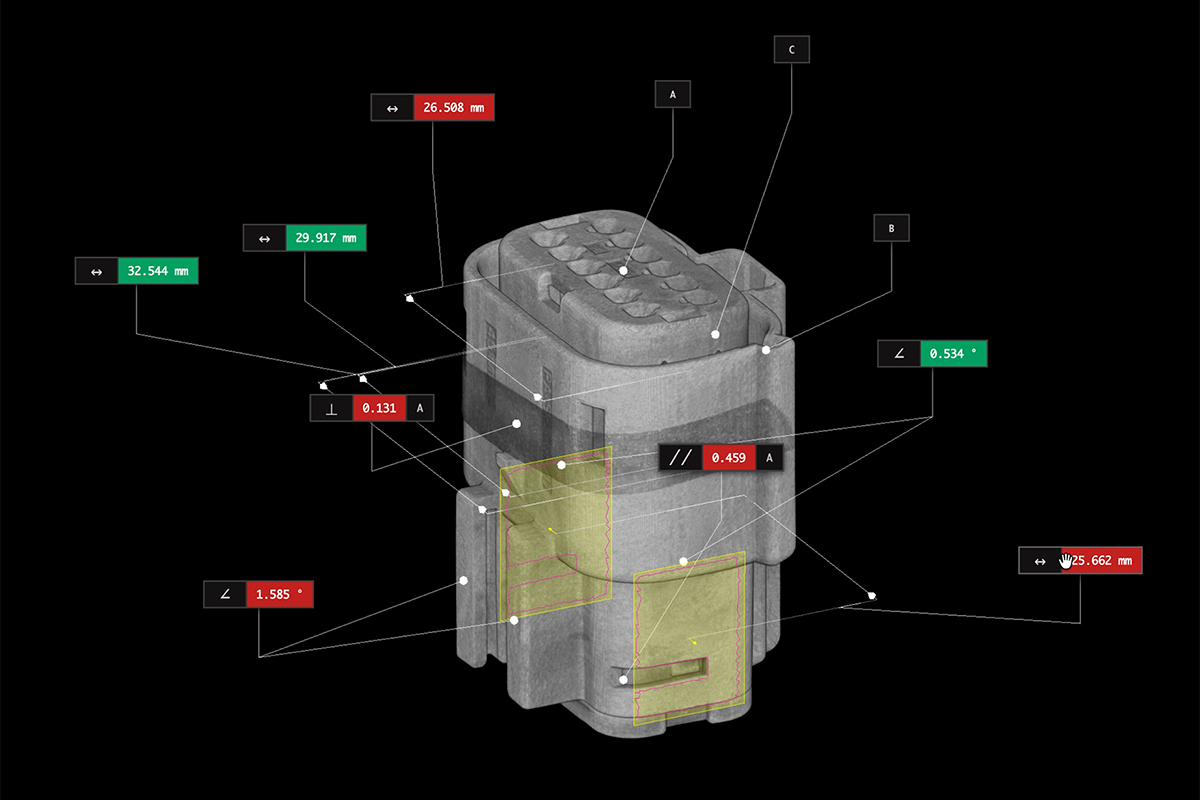Webinar: Inspecting automotive components with industrial CT
On-demand webinar
In this webinar, Lumafield Co-Founder and Head of Research & Development Dr. Kevin Cedrone walks through the design of four familiar car parts and pinpoints common defects using insights gained from industrial CT scans.
Today, there are almost 300 million cars in the United States, and automotive manufacturers are constantly pushing the envelope to make transportation more sustainable, easier to use, and safer.
Modern automotive components have to perform perfectly throughout tens of thousands of cycles over the course of their lifetimes. A single design or manufacturing defect could have disastrous results, injuring passengers and triggering costly recalls.
These defects are often outwardly invisible, but industrial CT technology makes it easy to find them. An unparalleled diagnostic tool, industrial CT allows engineers to take full control of the product development and manufacturing processes of their automotive components.
Industrial CT works according to the same principles as medical CT. Instead of the X-ray source and detector rotating around the patient, Lumafield’s Neptune industrial CT scanner reverses this form factor and rotates the object. This generates a series of two-dimensional radiographs—the black and white images familiar from traditional X-rays. Lumafield’s browser-based Voyager software then reconstructs these radiographs into a three-dimensional model, capturing both internal and external details that can be visualized in a number of ways.

For the automotive industry, CT scanning is unmatched for non-destructive testing (NDT) of critical parts such as airbags, engine piston heads, and plastic components. CT scanning allows for quick detection of internal defects and imperfections in these parts, such as cracks, porosity, and voids, which are not easily visible to the naked eye or traditional inspection techniques. In the February 2023 Scan of the Month and this webinar, we measure the porosity of an injection-molded fuel cap. This helps manufacturers to ensure the quality and reliability of their products, reducing the risk of failure or recalls.

CT scanning also unlocks dimensional analysis and reverse engineering of automotive parts, processes where accurate measurements of complex geometries prove absolutely essential. Not only can the 3D visualization be used to generate CAD models for further examination, Voyager’s CAD Comparison tools makes it easy to see how a physical object diverges from its original design. CAD Comparison instantly reveals signs of warping and tool wear, making it easy to tune manufacturing parameters. It can quickly highlight machined and stamped features that are misplaced or missing. And it’s an invaluable tool for failure analysis, pinpointing broken parts and capturing deflection.

Industrial CT scanning plays a crucial role in improving the quality, reliability, and performance of automotive parts and components, while also enabling faster and more accurate analysis and design.









